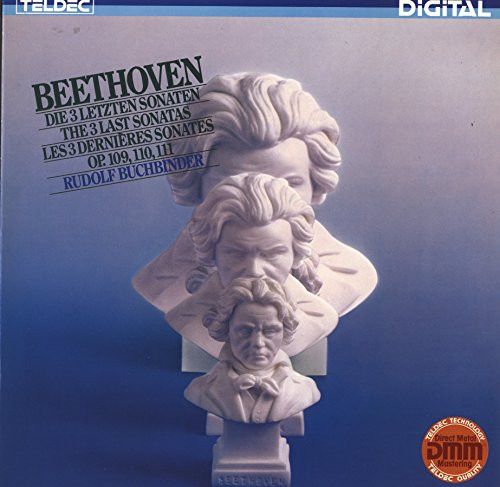 |
|
1 LP -
6.43027 AZ- (c) 1984
|
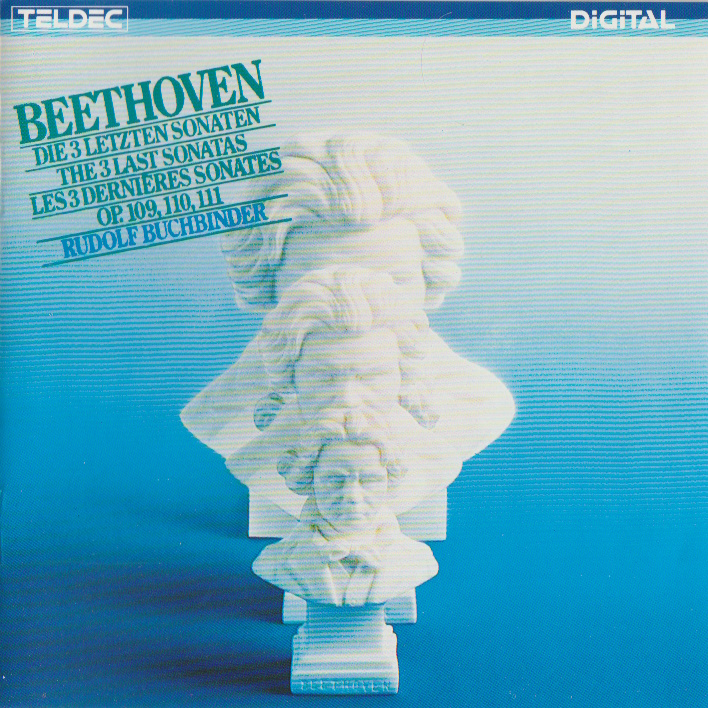 |
| 1 CD -
8.43027 ZK - (c) 1984 |
|
DIE
KLAVIERSONATEN
|
|
|
|
|
|
|
|
| Ludwig van
BEETHOVEN (1750-1827) |
Klaviersonate
Nr. 32 c-moll, Op. 111 - Dem
Erzherzog Rudolph von Österreich
gewidmet (Komponiert um
1821/22)
|
|
27' 06" |
|
|
-
Maestoso · Allegro con brio ed
appassionato
|
8' 57" |
|
A1 |
|
-
Arietta: Adagio molto semplice e
cantabile
|
18' 09" |
|
A2 |
|
Klaviersonate
Nr. 30 E-dur, Op. 109 - Maximiliane
von Brentano gewidmet
(Komponiert um 1820) |
|
18' 57" |
|
|
-
Vivace, ma non troppo
|
4' 01" |
|
A3 |
|
-
Prestissimo
|
2' 16" |
|
A4 |
|
-
Gesangvoll, mit innigster
Empfindung: andante molto cantabile
ed espressivo
|
12' 40" |
|
B1 |
|
Klaviersonate
Nr. 31 As-dur,
Op. 110 (Komponiert
1821)
|
|
20' 06" |
|
|
-
Moderato cantabile molto espressivo
|
6' 26" |
|
B2 |
|
-
Allegro molto
|
1' 59" |
|
B3 |
|
-
Adagio ma non troppo · Gufa: Allegro
ma non troppo
|
11' 41" |
|
B4 |
|
|
|
|
Rudolf BUCHBINDER,
Klavier (STEINWAY-Flügel)
|
|
|
|
|
|
Luogo
e data di registrazione |
|
-
|
|
|
Original
Editions |
|
Telefunken |
6.35490 FK - Vol.2 | 3 LPs | LC
0366 | durata: 53' 24" · 41' 14"
· 49' 53" | (p) 1981 | ANA |
stereo | (Nr. 32)
Telefunken | 6.35596 FK - Vol.4 |
3 LPs | LC 0366 | durata: 55' 39"
· 42' 47" · 65' 59" | (p) 1982 |
ANA | stereo |
(Nr. 30)
Telefunken
| 6.35596 FK - Vol.3 | 3 LPs |
LC 0366 | durata: 53' 24" · 41'
14" · 49' 53" | (p) 1982 | ANA |
stereo | (Nr. 31)
Teldec | 6.4207 AZ | 1 LP | LC
3706 | durata 66' 00" | (p) &
(c) 1984 | DDD/DMM | stereo
|
|
|
Edizione CD
|
|
Teldec |
8.43027 ZK | 1 CD | LC
3706 | (c) 1984
| DDD/DMM | stereo
|
|
|
Executive
Producer |
|
-
|
|
|
Recording
Engineer |
|
-
|
|
|
Cover design
|
|
Holger
Matthies
|
|
|
Note |
|
- |
|
|
|
|
| THE 32
PIANO SONATAS (10 CDs DMM) |
Piano
Sonatas Nr. 30 Op. 109, 31 Op.
110, 32, Op. 111
The only major works for which
Beethoven found the strength
during the years in which he
struggled with the “Missa
Solemnis” are the three sonatas
opp. 109, 110 and 111, written, as
he claimed with some exaggeration,
at a stroke. (He described them,
with some bitterness, as work for
his daily bread and essential to
his subsistence.) The first
movement of op. 109 is the most
remarkable of those late sonatas,
from op. 90 onwards, which are of
an experimental character and
deviate from the usual pattern.
The enormous contrast between the
vivace sections and those marked
“adagio espressivo” resembles but
fleetingly, almost by free
association, the traditional
contrast between the first and
second subject of sonata form. The
last movement, which is longer
than the other two together, is a
set of character variations, like
op. 111, and there as here trills
play a dominant role in the final
variation. The rhythm of the theme
is archaic, rather like that ofa
saraband; Czerny said that it
recalled the style of Handel and
J. S. Bach.
In op. 110, composed 1821/22, the
first movement falls in with the
free fantasy-like form of the first
movement of op. 109 in that it
resembles a free variation on a
single theme rather than the
classical sonata model. The final
movement - which is preceded by a
scherzo middle movement in even
tempo - carries great weight in
this sonata. Like the third
movement of the string quartet op.
132, which is similarly
constructed, the finale of op. 110
follows a quasi-psychological
course. One cannot rule out a
connection between this music and
the composer’s serious illness of
1821.
Op. 111 has only two movements, as
did opp. 54,78 and 90 (and, in a
manner of speaking, the final
version of the “Waldstein”),
though in all these the second
movement is in a fast tempo, as is
customary with finales. Here,
however, as in the last movement
of op. 109, we have a huge set of
variations in what is basically a
slow tempo, taking almost twice as
long as the first movement: richly
endowed with figurations, combining
in itself several tempi through
its changing time signatures,
abundant in character as in
sonorities some of which, such as
the chains of trills or the long
stretches of unchanged harmony,
recall the last movement of the
“Waldstein”. The sonata was
dedicated to Beethoven’s most
prominent pupil and possibly his
only friend of his later years,
the Archduke Rudolf of Austria,
not least of all as an act of
politeness towards the dedicatee,
since the composer had been unable
to complete, as promised, the
Missa solemnis in time for his
patron’s installation as
Archbishop of Olmutz in 1820.
Jean
Meuchtelbach
|
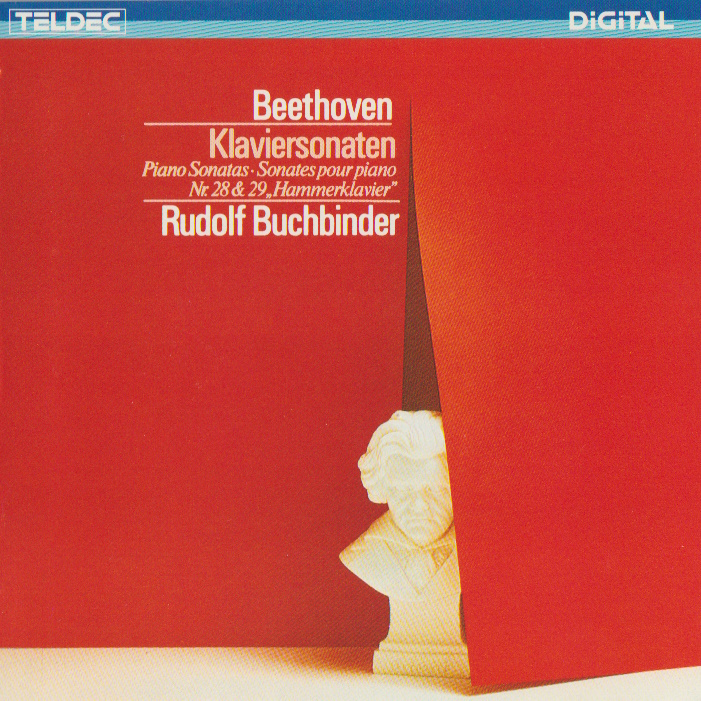
1 CD - 8.42761 ZK - (c) 1984
 1 CD -
8.43027 ZK - (c) 1984
1 CD -
8.43027 ZK - (c) 1984

1 CD -
8.43206 ZK -
(p) 1985
1 CD - 8.43415
ZK - (p) 1986
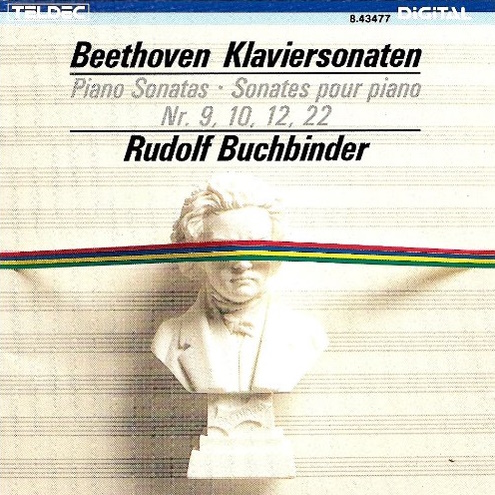
1 CD - 8.43477
ZK - (p) 1987
|
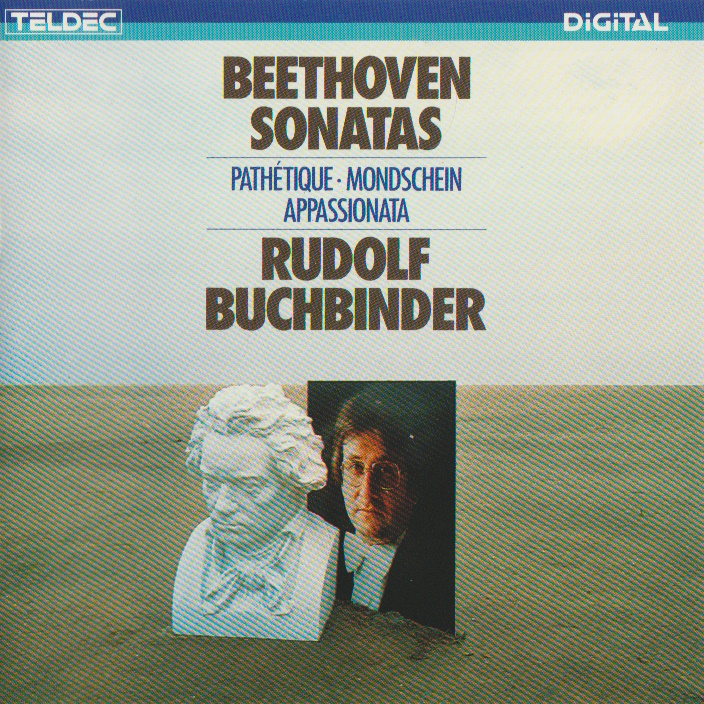
1 CD - 8.42913 ZK - (c) 1983
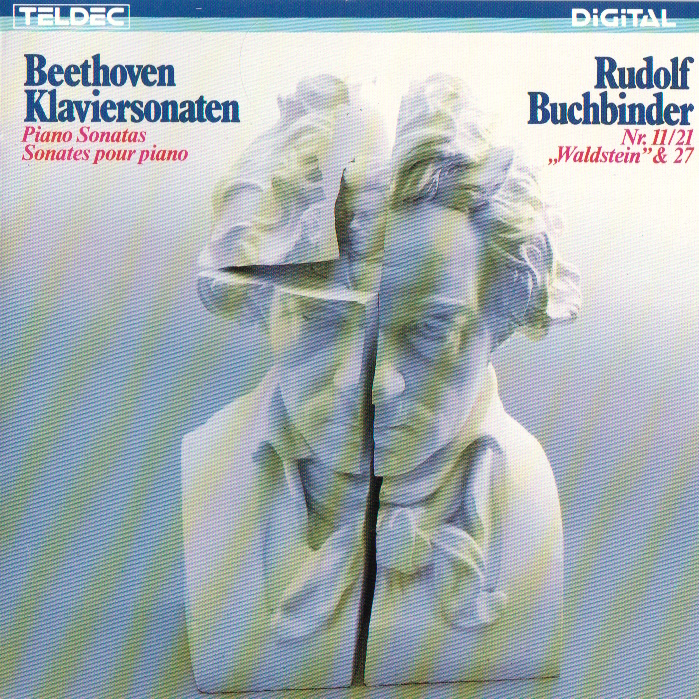
1 CD - 8.43111 ZK - (p)
1985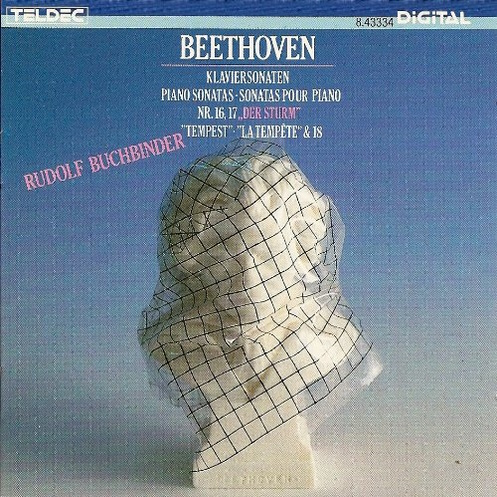
1 CD - 8.43334 ZK
- (p) 1986

1 CD - 8.43476
ZK - (p) 1987

1 CD - 8.43478
ZK - (p) 1987
|
|
|
|
|